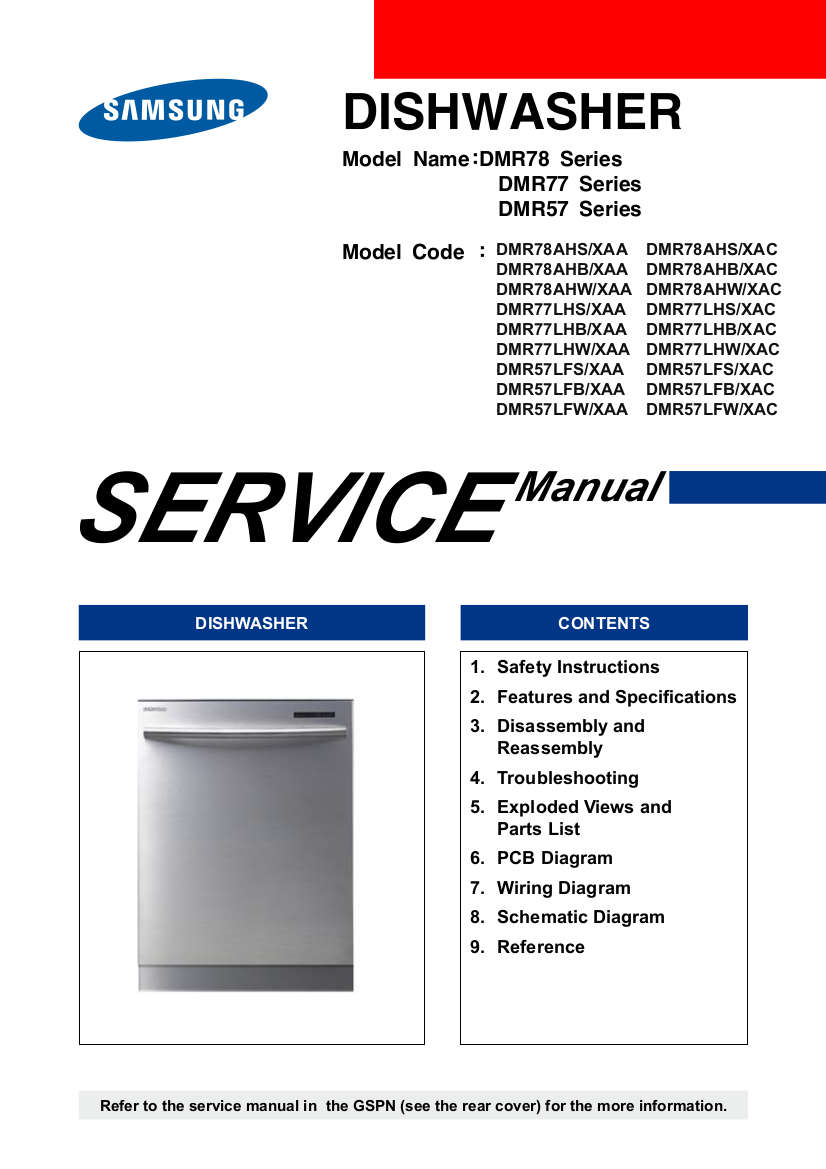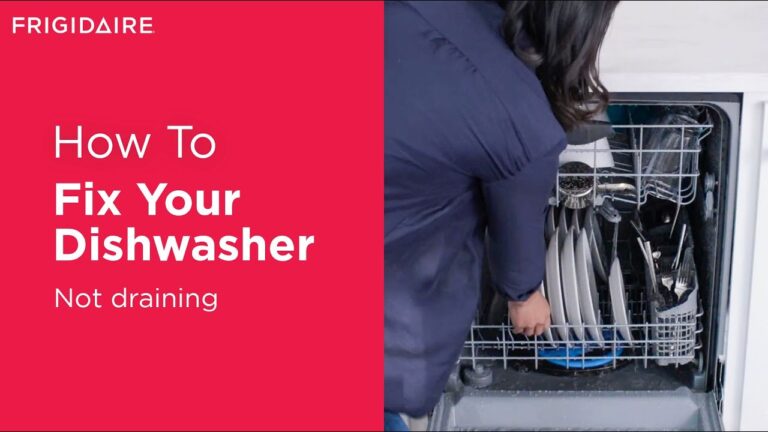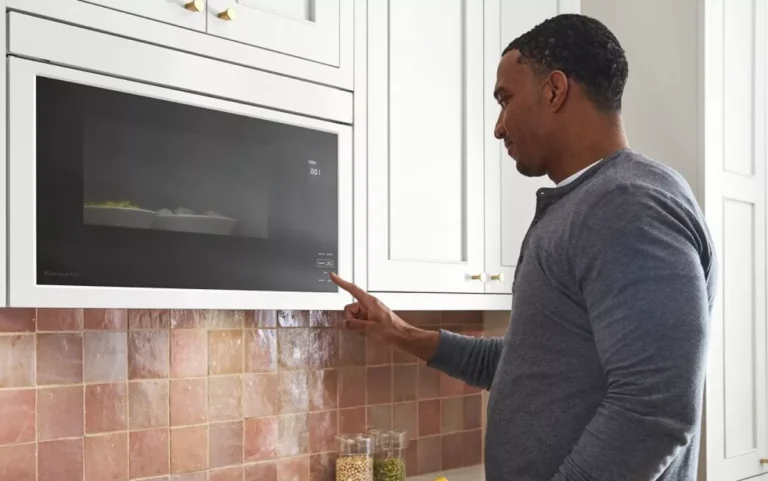Samsung Dishwasher Troubleshooting Manual: Expert Tips & Solutions
Having trouble with your Samsung dishwasher? You’re not alone.
Many users face common issues. This Samsung Dishwasher Troubleshooting Manual is your go-to guide. Dishwashers can sometimes act up, and knowing how to fix them can save time and money. Whether it’s a leaking problem, dishes not drying, or strange noises, this guide will help.
We’ll walk you through the steps to identify and solve various issues. Keep reading to learn how to keep your Samsung dishwasher running smoothly. With clear instructions and easy tips, you’ll become a pro at troubleshooting. Let’s dive in and get your dishwasher back to its best performance.

Credit: www.scribd.com
Common Issues
Samsung dishwashers are reliable, but they can encounter problems. Knowing the common issues helps in troubleshooting. This guide covers frequent problems like the dishwasher not starting and poor cleaning performance.
Not Starting
If your Samsung dishwasher isn’t starting, check the power supply. Ensure the dishwasher is properly plugged in. Verify that the circuit breaker hasn’t tripped. Inspect the door latch. The dishwasher won’t start if the door isn’t securely closed. Look at the control panel for error codes. These codes can indicate specific issues.
Poor Cleaning Performance
Poor cleaning performance is frustrating. First, check the spray arms. They should move freely. Blockages can prevent proper water flow. Clean the filters regularly. Clogged filters reduce cleaning efficiency. Use the right detergent. Not all detergents work well with every dishwasher. Lastly, avoid overloading. Overloading prevents water from reaching all dishes.
Error Codes
Encountering error codes on your Samsung dishwasher can be frustrating. These error codes signal that something is wrong with the appliance. They help identify the problem quickly, allowing you to fix it or call for assistance. Understanding these codes is crucial for maintaining your dishwasher’s performance.
Interpreting Codes
Samsung dishwashers display various error codes to indicate specific issues. Here are some common error codes and their meanings:
| Error Code | Meaning |
|---|---|
| 4E | Water supply error |
| 5E | Drain error |
| LE | Leakage error |
| OE | Overflow error |
| HE | Heater error |
Resolving Code Issues
Once you know what the error code means, the next step is to resolve the issue. Here are steps to troubleshoot common error codes:
- 4E – Water supply error: Check the water supply valve. Ensure it is open and water is flowing.
- 5E – Drain error: Check the drain hose for clogs. Clean the filter and ensure the hose is not kinked.
- LE – Leakage error: Inspect the dishwasher for leaks. Tighten any loose connections and replace damaged parts.
- OE – Overflow error: Ensure the float switch is not stuck. Check for any blockages that might cause overflow.
- HE – Heater error: Inspect the heating element. Ensure it is functioning properly and replace if necessary.
If these steps do not resolve the issue, it may be best to consult the Samsung Dishwasher Troubleshooting Manual or contact a professional technician for help.
Water Supply Problems
Experiencing water supply problems with your Samsung dishwasher can be frustrating. Common issues include no water flowing in or water leaking out. Identifying and fixing these problems can save you from calling a technician. Read on to troubleshoot and resolve water supply issues.
Checking Water Inlet
First, verify that the water supply valve is open. Ensure the dishwasher is connected to the water supply.
Next, check for kinks in the water inlet hose. A kinked hose can block water flow. Straighten any visible kinks.
Inspect the inlet filter for debris. A clogged filter can restrict water flow. Clean the filter if needed.
| Steps | Details |
|---|---|
| 1 | Open the water supply valve. |
| 2 | Check the inlet hose for kinks. |
| 3 | Inspect and clean the inlet filter. |
Fixing Water Leaks
Water leaks can cause damage. First, inspect the door seal for any cracks or wear. Replace the seal if damaged.
Examine the water inlet hose and connections. Ensure they are tight and secure. Loose connections can cause leaks.
Finally, check the dishwasher’s tub for any cracks. A cracked tub may need a professional repair.
- Inspect the door seal and replace if necessary.
- Check the water inlet hose and connections.
- Inspect the dishwasher tub for cracks.

Credit: new2.steprightupmanuals.com
Drainage Issues
Experiencing drainage issues with your Samsung dishwasher can be frustrating. These problems can lead to standing water and improper cleaning. Understanding the common causes helps in resolving them quickly.
Clogged Filters
Clogged filters are a common reason for drainage problems. Check the filter at the bottom of your dishwasher. Food particles and debris often block it. Remove the filter and clean it thoroughly under running water. Ensure no residue remains before placing it back.
Blocked Drain Hose
A blocked drain hose can also cause drainage issues. Inspect the hose for any kinks or obstructions. Disconnect the hose from the dishwasher and clear any blockages. Running water through the hose can help verify it is clear. Reconnect the hose securely to avoid leaks.
Electrical Problems
Experiencing electrical problems with your Samsung dishwasher can be frustrating. These issues often stem from power supply or wiring faults. Use this guide to identify and fix these common problems.
Power Supply Check
First, ensure your dishwasher is receiving power. Check if the appliance is plugged in securely. Verify that the circuit breaker is not tripped.
- Ensure the power cord is fully plugged into the outlet.
- Inspect the outlet for any visible damage.
- Check the circuit breaker panel for any tripped breakers. Reset if necessary.
After confirming the power supply, you can proceed to inspect the wiring.
Faulty Wiring
Faulty wiring can cause your dishwasher to malfunction. Inspect the wiring connections inside the dishwasher.
| Step | Description |
|---|---|
| 1 | Unplug the dishwasher for safety. |
| 2 | Remove the access panel at the bottom front. |
| 3 | Inspect wiring for any loose or disconnected wires. |
| 4 | Reconnect any loose wires. Tighten any loose connections. |
| 5 | Look for any signs of burnt or damaged wires. Replace them if necessary. |
Make sure all connections are secure before plugging the appliance back in.
Maintenance Tips
Maintaining your Samsung dishwasher ensures it runs efficiently and lasts longer. Regular upkeep can prevent many common issues and save you time and money. Here are some essential maintenance tips to keep your dishwasher in top condition.
Regular Cleaning
Clean the dishwasher’s exterior and control panel with a damp cloth. Wipe the door seals and edges to remove any food particles. This prevents mold and mildew buildup. Clean the filter regularly to avoid clogging. Remove the filter, rinse it under running water, and scrub with a soft brush.
Run an empty cycle with a dishwasher cleaner monthly. This helps remove any built-up grease and grime. Use a toothbrush to clean the spray arms. Ensure the holes are clear for proper water flow. Check the drain for any debris and remove it.
Inspecting Components
Check the racks for any damage or rust. Replace any broken or worn-out parts. Inspect the spray arms to ensure they rotate freely. Make sure they are not obstructed by utensils or dishes.
Examine the door latch and hinges. Ensure they close and seal properly. A faulty latch can cause leaks. Look at the water inlet valve and hoses. Check for any leaks or cracks. Replace them if needed.
Regularly inspect the dishwasher’s detergent dispenser. Ensure it opens and closes smoothly. Clean it if there is any buildup. Verify the float switch moves freely. This prevents overfilling and potential leaks.
Performance Optimization
Optimizing the performance of your Samsung dishwasher can help you achieve spotless dishes every time. Small adjustments in how you load the dishwasher and the type of detergent you use can make a significant difference. Let’s explore some effective techniques.
Loading Techniques
Proper loading is crucial for optimal performance. Place larger items like pots and pans on the bottom rack. Ensure they do not block the spray arms. Smaller items, such as glasses and bowls, should be placed on the top rack. Position them at an angle to allow water to reach all surfaces. Avoid overcrowding the racks as this can prevent water and detergent from circulating freely.
Detergent Choices
The type of detergent you use impacts cleaning efficiency. Use a high-quality, dishwasher-specific detergent. Tablets or pods often provide the best results. They are pre-measured and ensure the right amount is used. Also, consider using a rinse aid. It helps to reduce water spots and improves drying. Avoid using regular dish soap as it can create too many suds.

Credit: www.samsung.com
Professional Help
Sometimes, fixing a Samsung dishwasher on your own is not possible. Professional help can ensure your appliance gets back to optimal performance. Understanding when to call a technician and finding authorized service centers are crucial steps in this process.
When To Call A Technician
Knowing when to call a technician can save time and further damage. Here are some signs:
- Strange noises during operation.
- Water leakage.
- Not draining properly.
- Error codes that you can’t clear.
If you notice any of these issues, it is best to contact a professional. Attempting to fix complex issues without proper knowledge might lead to more damage.
Finding Authorized Service Centers
Finding authorized service centers is essential for reliable repairs. Samsung provides an easy way to locate these centers:
- Visit the Samsung website.
- Go to the support section.
- Enter your location details.
- Select the nearest service center.
Using authorized centers ensures that your dishwasher is serviced by trained professionals. They use genuine parts, which extends the life of your appliance.
Here is a quick reference table for common issues and professional help:
| Issue | When to Call a Technician | Finding Authorized Service Centers |
|---|---|---|
| Strange Noises | If noises persist after basic troubleshooting. | Use Samsung’s website to find a center. |
| Water Leakage | Leakage from door or bottom of unit. | Contact the nearest authorized center. |
| Not Draining | Water remains after a full cycle. | Locate an authorized service center. |
Frequently Asked Questions
Why Is My Samsung Dishwasher Not Starting?
Ensure the door is fully closed and latched. Check the power supply and reset the breaker.
How Do I Reset My Samsung Dishwasher?
Press and hold the Start button for 3 seconds. This will reset your dishwasher.
Why Is My Samsung Dishwasher Not Draining?
Check the drain hose for clogs. Clean the filter and ensure the garbage disposal is clear.
How Can I Fix A Leaking Samsung Dishwasher?
Inspect the door gasket for damage. Replace if necessary. Also, check for loose connections.
Why Is My Samsung Dishwasher Making Loud Noises?
Check for items blocking the spray arms. Ensure dishes are properly loaded and not touching each other.
Conclusion
Fixing your Samsung dishwasher can be simple with the right guide. Follow the steps in this manual to resolve common issues. Regular maintenance keeps your dishwasher running smoothly. Check filters, clean spray arms, and ensure proper loading. If problems persist, consult a professional.
This troubleshooting manual aims to save you time and money. Keep it handy for future reference. Your dishwasher should now work efficiently. Enjoy clean dishes without stress.






